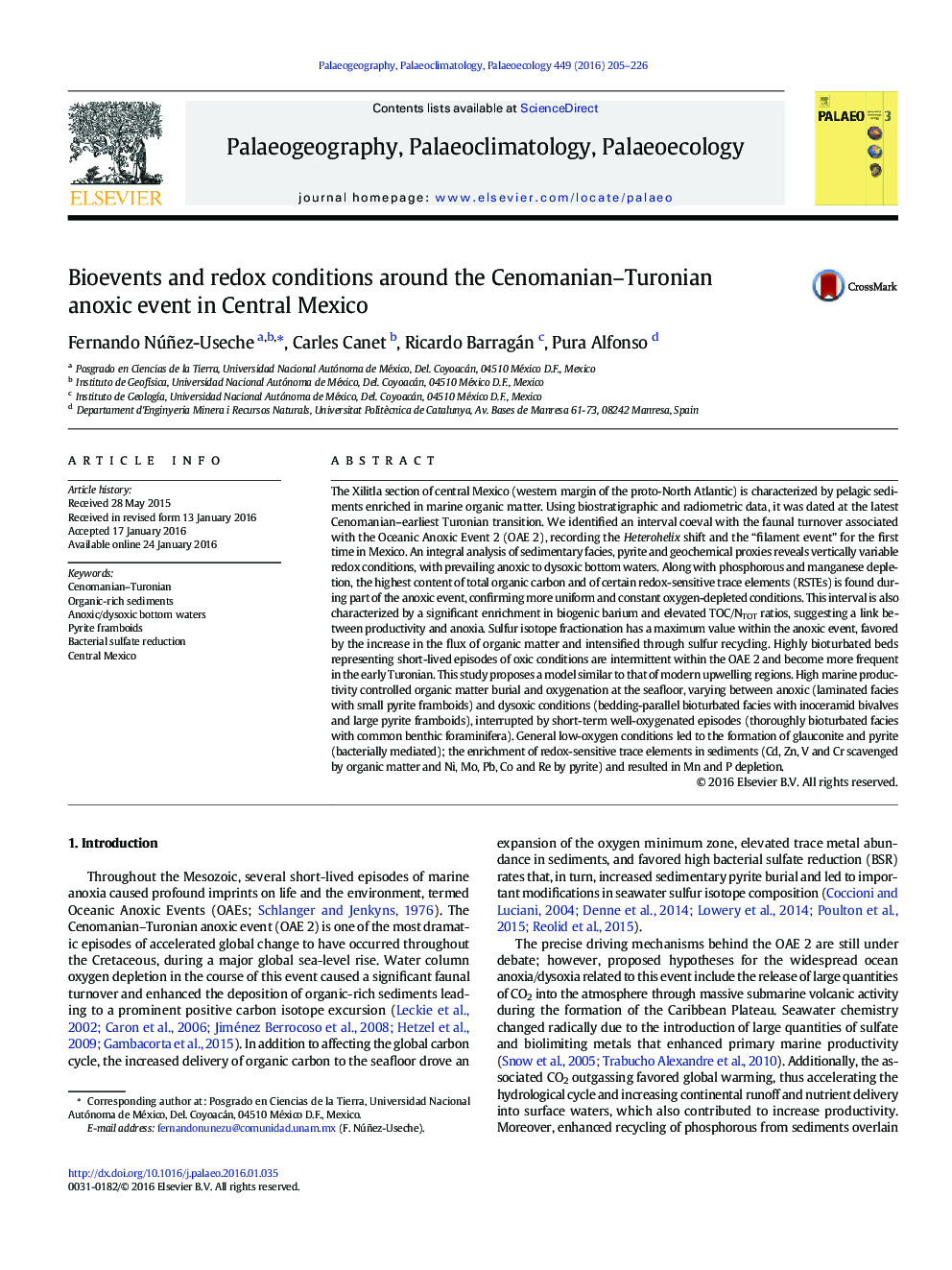| کد مقاله | کد نشریه | سال انتشار | مقاله انگلیسی | نسخه تمام متن |
|---|---|---|---|---|
| 4465761 | 1622142 | 2016 | 22 صفحه PDF | دانلود رایگان |

• We documented the biotic turnover and oxygen depletion associated with OAE 2.
• First record of the filament event and the Heterohelix shift from Mexico
• This study constructs a model by integrating sedimentary, biological and geochemical data.
• A global mechanism driving the global sedimentary sulfur isotope signal during the OAE 2
The Xilitla section of central Mexico (western margin of the proto-North Atlantic) is characterized by pelagic sediments enriched in marine organic matter. Using biostratigraphic and radiometric data, it was dated at the latest Cenomanian–earliest Turonian transition. We identified an interval coeval with the faunal turnover associated with the Oceanic Anoxic Event 2 (OAE 2), recording the Heterohelix shift and the “filament event” for the first time in Mexico. An integral analysis of sedimentary facies, pyrite and geochemical proxies reveals vertically variable redox conditions, with prevailing anoxic to dysoxic bottom waters. Along with phosphorous and manganese depletion, the highest content of total organic carbon and of certain redox-sensitive trace elements (RSTEs) is found during part of the anoxic event, confirming more uniform and constant oxygen-depleted conditions. This interval is also characterized by a significant enrichment in biogenic barium and elevated TOC/NTOT ratios, suggesting a link between productivity and anoxia. Sulfur isotope fractionation has a maximum value within the anoxic event, favored by the increase in the flux of organic matter and intensified through sulfur recycling. Highly bioturbated beds representing short-lived episodes of oxic conditions are intermittent within the OAE 2 and become more frequent in the early Turonian. This study proposes a model similar to that of modern upwelling regions. High marine productivity controlled organic matter burial and oxygenation at the seafloor, varying between anoxic (laminated facies with small pyrite framboids) and dysoxic conditions (bedding-parallel bioturbated facies with inoceramid bivalves and large pyrite framboids), interrupted by short-term well-oxygenated episodes (thoroughly bioturbated facies with common benthic foraminifera). General low-oxygen conditions led to the formation of glauconite and pyrite (bacterially mediated); the enrichment of redox-sensitive trace elements in sediments (Cd, Zn, V and Cr scavenged by organic matter and Ni, Mo, Pb, Co and Re by pyrite) and resulted in Mn and P depletion.
Journal: Palaeogeography, Palaeoclimatology, Palaeoecology - Volume 449, 1 May 2016, Pages 205–226